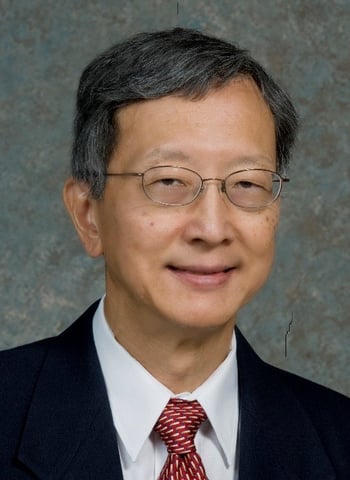Empathy at the Heart of Healthcare Technology Management

While many of us don’t know the ins and outs of what it means to maintain the equipment inside healthcare facilities, our Healthcare Technology Management (HTM) teams at Sodexo do.
 Binseng Wang, VP of Healthcare Technology Management Program Management at Sodexo, shared great insight into the field and his experience within HTM so you can see what it means to work in such a significant discipline at Sodexo.
Binseng Wang, VP of Healthcare Technology Management Program Management at Sodexo, shared great insight into the field and his experience within HTM so you can see what it means to work in such a significant discipline at Sodexo.
What led you to your current position at Sodexo?
BW: I have been in the HTM field for over 30 years, having worked inside hospitals, health systems, an equipment rental company and an independent service organization (ISO) prior to joining Sodexo.
I also worked in universities and research organizations and for medical devices manufacturers.
I also have been quite active on the international scene, having consulted for the World Health Organization (WHO), Pan-American Health Organization (PAHO), World Bank and with numerous countries’ health authorities on subjects related to HTM.
What is your typical day like?
BW: My role at Sodexo is to support our on-site and field service teams in complying with regulatory requirements and improve the quality of the services we provide to healthcare organizations.
We are currently involved in the implementation of a Quality Management System (QMS) that will allow us to continually improve our equipment maintenance and management services by learning best practices from each other and correcting the mistakes we’ve made (remember, we are all humans)!
What is your favorite part about working for Sodexo?
BW: I have been with Sodexo HTM just over a year. Since joining the company I have been extremely excited to see so many dedicated and competent colleagues at all levels.
This became quite apparent when the COVID-19 pandemic hit the healthcare organizations hard and yet none of our team members shied away from supporting the clinicians in providing care to the patients affected by this terrible disease. Kudos to all HTM heroes!
What does it take to be successful in HTM?
BW: While competency, technical expertise and attention to detail are extremely important, I believe the most important quality is empathy. After all, the reason we are in the healthcare industry is because we want to help others, particularly those affected by serious diseases.
The most gratifying aspect of our work is knowing that we are helping people get better and live longer. Some of those patients could be our friends, relatives or even ourselves!
What advice would you give to a candidate searching for a role like yours?
BW: Be willing to listen, learn and improve. Unlike medical equipment, human beings are extremely complex, and we have not been provided a set of blueprints for ourselves. So, our clinical colleagues are often striving to do the right thing for their patients, but they lack information and knowledge.
Sometimes they get frustrated and blame the equipment - or even us - for their inability to cure the patient, but this does not mean they don’t appreciate our help. It is for this reason that we need to empathize with them and try to help them whenever we can.
How does your team impact the quality of life for patients/clients?
BW: As explained above, my team (Program Management) does not directly service medical equipment or assist clinicians. However, the guidance and training we provide to the frontline biomedical engineering technicians (BMETs) and imaging system engineers (ISEs) allow them to improve the safety and reliability of equipment used for clinical services.
In this way, we help to improve the quality of life for both clinicians and, ultimately, the patients. As this pandemic has clearly shown, patients need equipment to sustain and improve their conditions (such as a ventilator). The Sodexo team is the one who ensures the equipment is safe and available for the care providers to use. Without HTM professionals there, even more patients would have died or had to stay in the hospitals longer.
At Sodexo, our goal is to improve the quality of life for patients and clients. This is what differentiates us from our competitors. We put the patient above everything else.
Is there anything else you’d like to share?
BW: While HTM is a very challenging profession—we often must work after regular hours and even on weekends—it is a very rewarding pursuit. You have the privilege to witness firsthand how you are making people’s lives better and longer. We are very much like medical doctors, except that our patients are not human beings but medical equipment.
Did Binseng’s story resonate with you? Take the next step in your HTM career and search for a new opportunity now!